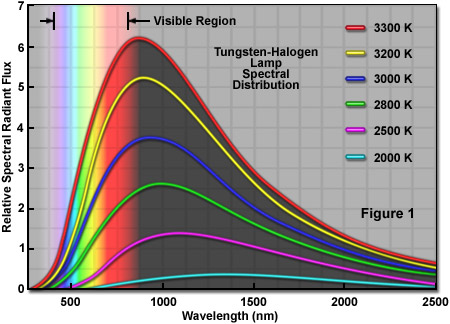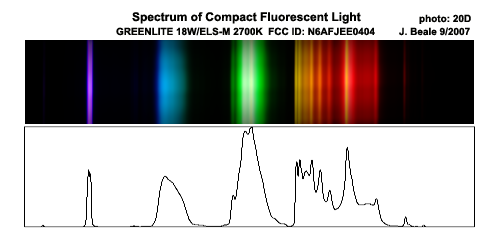I wonder how much this has to do with Kelvin or color temperature?
Sunlight has a typical color temp or 5500-6500K
Fluorescent cool white is around 5000K
Fluorescent warm white is around 3000K
Incandescent is around 2700K
Physicist here

This may be TMI, but I can shed some light on this.
So, the thing is that color only has a direct correlation to temperature when you're talking about "blackbody" radiation. Blackbody radiation refers to the glow that something has simply due to its temperature. For very hot objects, say about 2700 Kelvins, that glow can be in the visible spectrum that humans can see (hence the term "color temperature"). These are things like the heating elements on your electric stove, the filament in an incandescent light bulb, a hot piece of iron on a blacksmith's anvil, or the sun. Another important point about blackbody radiation is that it is always a CONTINUOUS spectrum. There are no gaps in the wavelengths of light that it emits. Let me illustrate:

Fluorescent bulbs are NOT blackbody sources. Fluorescent bulbs don't glow because of their temperature, they glow the same way a neon sign does: because of the direct electrical stimulation of gas and fluorescent atoms inside the bulb (fluorescent atoms absorb light and re-emit them in different wavelengths). They don't have a true color temperature, only an equivalent one that is meant to give you an idea of the color of light that it emits. Because it is NOT blackbody radiation and the light that it emits relies on the configuration of the electrons in the particular types of atoms in the bulb, the spectrum is NOT continuous:

To finally answer your question, the "skunking" of beer is caused by light breaking up a chemical compound from the hops, and that light will have to have a certain minimum wavelength to do the breaking. If you know that wavelength, color temperature can indeed predict how much effect the light would have on it since it is very easy to find how much light it will emit at that wavelength; every blackbody object at a particular temperature has the same spectrum. However, that ONLY works for blackbody sources, NOT fluorescent lights, since those lights spectra are not necessarily tied to their color temperature. To know if a fluorescent source would cause skunking, you'd have to find the wavelengths that the specific bulb emits, which is not knowable simply by its color.
I know that green glass filters to a wavelength that causes the skunking.
According to
this source, clear and green glass do not prevent skunking, only brown does.




